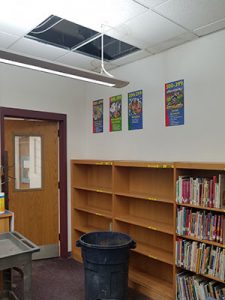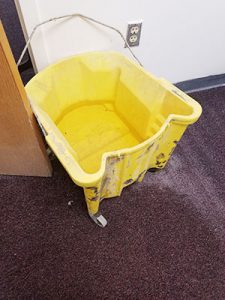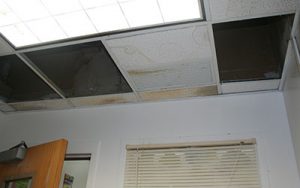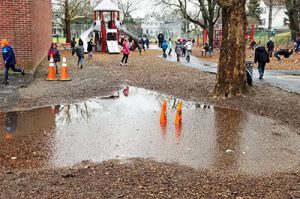Health & safety, building infrastructure the focus of Capital Project 2020
Watervliet City School District residents will vote on a proposed $9.9 million capital project on Tuesday, February 4. A supermajority (60%) vote is required to approve the project that would provide for essential repairs to maintain a safe and healthy learning environment for students and address building systems needs created by an aging infrastructure.
Voting will take place from 11 a.m. to 8 p.m. at two polling locations: Watervliet Elementary School and the Watervliet Elks Lodge.
The proposed $9,996,825 capital project addresses the district’s most immediate facilities needs as identified in the latest building condition survey. The New York State Education Department (SED) mandates that all school districts work with architectural/engineering firms to complete building condition surveys every five years. The surveys assess the condition of school buildings, systems and grounds within the district. The project proposal addresses only the highest priority needs, said Superintendent of Schools Dr. Lori Caplan.
“We narrowed the proposal down to absolute necessities. Items such as leaky roofs and freight elevators that are inoperable at times and impede day-today operations,” Dr. Caplan said. “Our students deserve to learn and our staff deserve to teach in a safe and healthy environment.”
Facilities Planning Committee provides input for capital project
Early last year, a Facilities Planning Committee representing various stakeholder groups, including school administrators, educators, maintenance staff, students, parents and a school board member, began a series of meetings with CSArch, the district’s architects, to review the building condition survey and prioritize needs and other possible renovations and improvements.
Throughout its meetings, the committee considered factors including the health and safety of students, staff, and school visitors; systems and equipment that have reached or exceeded life expectancy; deteriorating building components; and the ability to service or repair outdated equipment. After reviewing the final project scope presented by CSArch, the Board of Education approved a resolution in December to move forward with the nearly $10 million worth of capital expenditures and authorize a public vote.
The work summarized below is included in the proposed project:
- Replace roofs at the elementary and high schools.
- Rebuild and upgrade the high school elevator; replace elevators at the elementary school.
- Replace boilers at the elementary school; refurbish high school boilers.
- Replace heating circulation pumps at the elementary and high schools.
- Replace air ventilation units in the high school cafeteria and locker rooms.
- Replace hood exhaust in the high school kitchen.
- Replace light fixtures in the high school gym.
- Reconstruct drainage at the elementary school playground.
- Reconstruct masonry entrance steps at the elementary and high schools.
- Upgrade public address wiring and speakers at the elementary and high schools.



Is another capital project necessary now?
Like private homes, public school facilities need regular care and maintenance to ensure systems are safe, functional and efficient. While routine maintenance is budgeted for annually, everyday wear and tear by students, staff and visitors each year can drive costs beyond that which could be supported through the school budget. Larger repairs and maintenance items, such as those proposed in this project, would be next to impossible to pay through a district’s annual operating budget. “To pay these expenses through our regular school budget would place a greater financial burden on our community,” said Dr. Caplan.
She noted that the capital project is a fiscally responsible alternative for Watervliet schools because the state reimburses 95% of the eligible costs, and payment of the remaining local share is spread out over a longer period of time.

What is the financial impact of the project?
District officials estimate that state building aid would cover about $9.2 million of the proposed capital project cost. The approximately $800,000 balance would be funded through a 1.06% increase in the overall property tax levy, based on the district’s current tax cap data. As a result, school tax rates would increase $16.67 more per $100,000 of assessed property value per year in the City of Watervliet and $24.79 more per $100,000 of assessed property value per year in Mannsville.
Pending a supermajority approval, CSArch would submit plans to SED for review in the fall of 2020. Once approved by the state, the bidding process would be opened with the project work kicking off in the spring of 2021.
What will happen if this capital project referendum is voted down?
The school district must have a super majority (60% of the voters) approval for the project. Without super majority approval, the district will have no authorization to bond for the project and there will be no state aid to offset the costs.
The health and safety and infrastructure work proposed in the referendum are all identified in the district’s building conditions survey mandated by the state, and are therefore considered to be necessary.
If the capital proposition fails, district officials and the Board of Education will meet to consider putting it on the ballot for a second vote in May at the same time as the school budget vote.
If the proposition is again voted down, the work would have to be paid for through the school district’s general fund, with all of the associated costs passed to local taxpayers. Payment for the repairs would have to be made immediately rather than spreading the costs out over a number of years, as would happen with a bond.
If emergency repairs are necessary to address these issues, school officials may have no control over when or how the emergency repairs are done to minimize the impact on the students. This could ultimately create more work and additional costs.


